In an environment where entrepreneurial success is often measured by the size of an exit, the path to a lucrative acquisition can be riddled with uncertainty and complex challenges. Navigating the treacherous waters of M&A requires a steady hand, a keen eye for detail, and an unwavering commitment to maximizing value for all stakeholders.
John Ratliff, the visionary founder of align5 and CEO of Scaling Up Coaches, has made it his life’s work to be a guiding light for growth-oriented entrepreneurs. With a passion for strategy, company culture, and employee engagement, John brings a wealth of experience and insight to the table.
In this illuminating conversation, John shares his hard-won wisdom on the art and science of M&A. He touches on the subtle nuances of deal-making, the importance of emotional intelligence in high-stakes negotiations, and the transformative power of a well-crafted vision. Along the way, he offers practical tips and exercises to help entrepreneurs elevate their game and achieve their dreams of a successful exit.
Whether you’re a seasoned entrepreneur contemplating your next move or a rising star looking to take your business to the next level, this episode is a must-listen. Get ready to take notes as John Ratliff shares his playbook for M&A success.
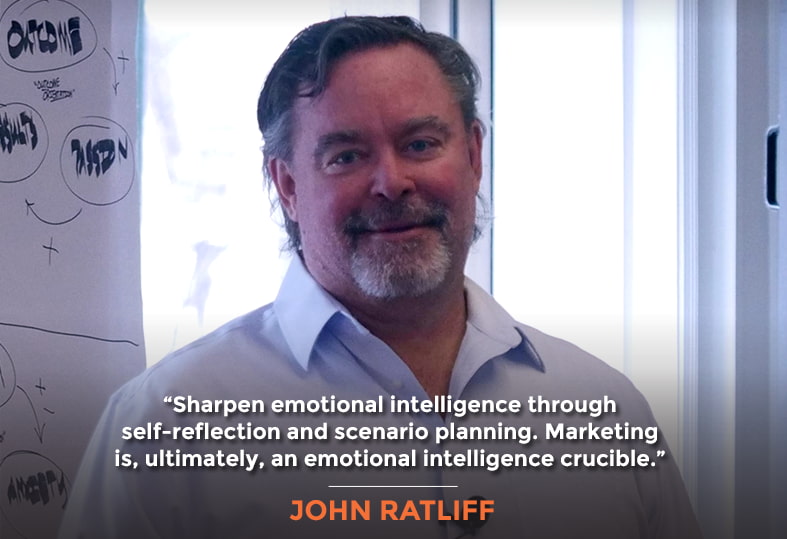
In This Episode
- [00:53] Stephan introduces John Ratliff and outlines the topics for the conversation.
- [02:13] John Ratliff shares his experiences investing in masterminds and personal development to enhance his gut instincts and pattern recognition.
- [06:46] John highlights how pattern recognition is crucial in mergers and acquisitions, giving a competitive advantage.
- [10:16] John discusses the importance of recognizing subtle cues in negotiations and the imbalance of leverage. He also tackles how you can sharpen your emotional intelligence.
- [17:43] Stephan and John explore the balance of time spent on personal development and its value in recharging and re-energizing.
- [26:41] John describes his morning and evening, focusing on doing a “personal painted picture” and its impact on team planning.
- [32:36] John explains using the free writing technique to access creativity and the importance of avoiding editing.
- [47:39] John elaborates on the impact of Michael Gerber’s book “The E-Myth Revisited” on his approach to separating business identity from personal identity.
- [51:11] John provides information for entrepreneurs interested in working with his team at align5.
John, it’s so great to have you on the show.
It’s great to be here. Thanks for having me.
So we met through a couple of masterminds. We’re both in Genius Network and Maverick. So I’m curious: how has it been for you to be in those masterminds, the other communities, the brotherhoods, and all you have been in over the years?
Yeah, for sure. It’s a really interesting question somebody asked me, and it was years and years ago. Still, at the time, I was probably spending 40 days a year in some form of business or personal development, masterminds, industry stuff like many different things, and they were being smart Alex, and the process of asking me these questions, but they were adding up all the money that was spent on all these different endeavors.
All the time and again, trying to be funny, the person said, “Hey, what do you get out of all these things? Are you just screwing around, or is there actual value to this because you can’t possibly implement everything that you learn?” It was a really good question, and I hadn’t thought about it that deeply before, but trying to give an honest, straight answer to a smart-ass question, I said, “You think about all the time you spend in all these different endeavors, and they were totally right. You could never implement everything that you learned like it would be impossible. But I’m a huge fan of the idea of pattern recognition.”
You could never implement everything that you learned like it would be impossible. But I’m a huge fan of the idea of pattern recognition.
As I’ve gotten some say wiser, I guess I just say older, but as I’ve aged, I realized that in most scenarios, I’ve got really good gut instinct. I normally know what to do, and very rarely do I find a situation that totally perplexes me. I realize that my pattern recognition capabilities are pretty good, and they’re well-informed.
I’d come across a study years ago, a thesis on grandmaster chess players. There are only about a thousand grandmaster chess players in the world and tens of thousands of masters. The thesis was that the grandmaster in chess, the best in the world, must be thinking further ahead than the masters. In setting out to prove that thesis, he actually disproved it. What he found was that chess is a pattern recognition game. There’s the board; the pieces make different patterns, strengths and weaknesses depending on which side of the board you’re on.
He found that they were about the same number of moves ahead. It’s three to six, depending on where in the game they are. But the grandmaster recognizes about 400% more 4x more chessboard patterns than the master. And there’s like, I used to know this number; there’s 63 and a whole bunch of zeros behind it. Several different combinations of pieces. So it’s not like you have to learn ten patterns or 100. There’s an unbearable amount of different patterns that chess pieces can make. But grandmasters recognized 4x more, so they knew the better. Next move to make, not necessarily further ahead next move to make.
I look at all the things we do, Maverick and Genius Network and all the other time, even stuff like this, as an opportunity to feed that pattern recognition machine or your gut instincts. So yeah, I still spend probably 30 or 40 days a year and hundreds of thousands of dollars on personal development every year. I think it’s informed me well so far, and I appreciate having gut instinct that is normally pretty accurate. So that was a really long-winded way of answering why I spent so much time in all these different endeavors.
Yeah, the money is a lot—hundreds of thousands of dollars. But time is even more expensive for you because your time is super valuable as a very successful business owner and serial entrepreneur.
Pattern recognition is like having a superpower in mergers and acquisitions (M&A). It helps us see connections others might miss, guiding us to make smarter decisions. Share on XThat’s the debate, right? I mean, that’s the big challenge. What’s the right balance of time away and time to recharge? I think if you’re going to do those types of things, we’ve met in some pretty fascinating places, and it’s not like it’s all work and no play when we go away from Maverick or for Genius. But I think you have to incorporate a way to make the time you spend valuable from a gut instinct perspective and really valuable from a recharge and re-energize perspective. Otherwise, you’re right; there isn’t enough time to do it all.
Well, one thing Tony Robbins talks about a lot is pattern recognition, and the next step is pattern utilization, where you recognize the pattern. Still, you, most importantly, must do something with it to get an outcome. So what are some examples where you’ve recognized patterns that maybe other people didn’t, and you utilize that to get a competitive advantage, close some sort of deal, or do some sort of initiative that wouldn’t have happened otherwise?
Yeah, I could probably think of hundreds of examples that come to mind. But one of the areas where I think it’s the most poignant or maybe the highest return on invested time is that I do M&A so I help entrepreneurs sell their companies at the most critical moment of all. We talk about operating a company as an income-producing set of activities, but selling a company is a wealth-producing set.
So much is written on sales and marketing, finance and operations, and all the operational aspects of building a growth company. But there’s really not much written on how to properly exit and ensure you don’t leave a lot on the table. And I think it’s in those moments because it’s such a lopsided playing field.
So, an entrepreneur might sell one or a handful of companies in a lifetime in a bigger private equity fund and might buy 30 or 40 companies in a year. So, there’s a real delta in terms of capabilities. And the entrepreneur can often be disadvantaged. Selling a company is kind of a hyper-supercharged set of pattern recognition activities. There are so many subtle little things that are M&A. Negotiations can take six, seven, or eight months sometimes.
It’s never completely stasis in terms of who has the leverage.
There are so many points along the way. One of the things we talk about heavily at any moment in a deal is that it’s never completely stasis in terms of who has the leverage. So rarely ever for microseconds is the leverage in any given deal 50-50; there’s always one side or the other that has leverage.
We always talk to entrepreneurs about: first, knowing where the leverage lies, always like always and second, spend as much time as possible using the leverage on your side of the ledger.
So what gets lost often is that buyers of companies have their own reasons and motivations and need to put capital to work, as well as all sorts of other things that pressure them to get deals done. But there’s a mindset. Often, it sets in for the seller. I need the buyer’s money to get this transaction done more than they need my business to accomplish their goals. They end up seeding a lot of leverage to buyers just from a psychological standpoint, and I can see those patterns start to emerge and very subtly guide my entrepreneurial client.
I only represent the sell side. We’ll advise companies on strategy around the buy side, but I never represent a buy-side buyer in a transaction, so I can sort of help nudge my client along.
And often, these things are super subtle. They’re really kind of high sensitivity, emotional intelligence, and patterns to pick up on. And you really have to be tuned into what’s going on. When you’re the seller entrepreneur, you’re so focused on what you will say next and driving the transaction forward that you miss all the subtle clues along the way.
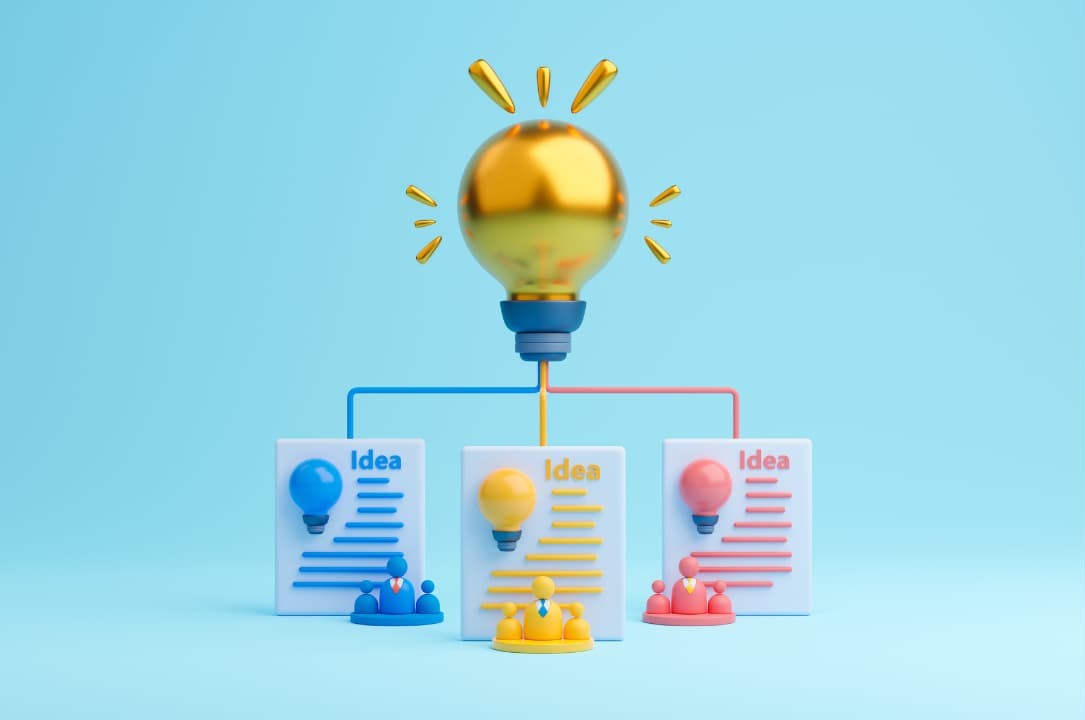
The role that I get to play is I get to watch for all those little, and it could be a facial expression; it could be literally a shift in somebody’s seat at a certain moment in a conversation that basically is a poker tell kind of pattern recognition moment where I know, “hey when you talked about this, you didn’t notice.” Still, that person in the, normally there’s more than one buyer, there’s more than one person at the table with the buyer, brings a group, and “hey, when you talked about the decline in market share in your Singapore office, that person got a little bit uncomfortable at that moment.
So, let’s dig in to see what that means.” Those are the subtle patterns, I think, that, you know, I get to see. Cause I’ve done M&A for so long that the average entrepreneur is just trying to figure out what to say next in this back-and-forth conversation. And they miss a lot of those cues. So, emotional intelligence is a field ripe for many patterns.
Yeah. How do you recommend our listeners who might not have learned emotional intelligence in a more formal environment? Whether it’s an online course, a workshop, or a book, they’re just operating on their instincts. What do you tell them to do to sharpen their emotional intelligence?
The first step in developing a high EQ is personal EQ.
I think the key word you said before emotional intelligence was instincts. I feel super strongly that, and there’s a massive amount of debate on both sides of this equation. Some philosophical thinkers will tell you to ignore your instincts and only work on logic, fact, and rhetoric. And the other side is to trust your gut implicitly.
What I like to think about is, all right, let’s root cause analysis, decision making, and go back and say, all right, here’s where I trusted my gut, here’s what my gut said, and in hindsight, here was the reality of that situation. Where was the delta? What did I miss? So, on a forward-looking basis, I’m fascinated by scenario planning. My mind is always running. It’s just a natural state for me to constantly run scenarios forward.
So, in any situation like this podcast, I’m sure my brain in the background is running multiple scenarios on many different things. So that’s just natural for me to have happen. But I always then like to go back and say, “Okay, here was the set of circumstances, here’s what I thought to be true, here’s how I acted based on what I thought. Here’s what happened. Was I right or wrong? Why was I right or wrong? Where was I right or wrong? And what can I learn from it?” And I do all this sort of, I think, at a subconscious level, but just being tuned into your gut and asking yourself periodically, “hey, am I being betrayed by my gut instinct, or am I being well informed by it?”
That’s to me, the first building block of emotional intelligence is your emotional intelligence. Listen, I struggle more than most regarding emotional regulation and stressful situations. I have a set of ways to react that I’m not super excited about. I’m constantly working on it but also hyper-aware of it.
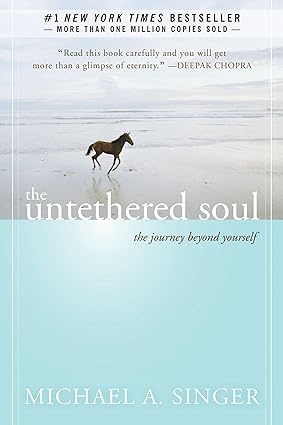
So emotional intelligence doesn’t mean you always act appropriately emotionally in any given situation. It just means, you know, your tendencies, what to work on and what to expect. I think you can mitigate some of that in hindsight if, like, I know when I get questioned and pushed, I’ll always get triggered. It’s just part of who I am, but I know that, so I can anticipate that that will happen.
So, the first step in developing a high EQ is personal EQ. I think a lot of it comes with experience and curiosity about why I got mad about that. Or why did I react that way to that? Or what was I thinking when I said this? And just being introspective and curious about behavior, both your own and others, I think, is the first step.
Yeah, makes sense. Well, I had an amazing guest on the podcast a while ago, Debra Levine and the assessment that her company came up with for her and her team was the PRINT® assessment. I learned about it from Dan Sullivan and the Strategic Coach. It gets at the unconscious motivators and triggers that drive us. If you want to understand your emotional intelligence, what drives you, how you can react on autopilot, and why, that’s a great assessment. I’ve done several assessments, and I just love that one. Are you familiar with it?
All right, I will check it out. I’m not familiar with it. A part of being introspective is I love assessments. So, I will make a note and check it out. I actually am fascinated, too. Pattern recognition, again, comes down to how you act at the subconscious or unconscious level. It’s amazing. I don’t know the exact stats, but a thousand or 10,000 times more brain power goes to the subconscious and unconscious behaviors versus your conscious awareness.
When you really start to dig in on that, we’ve done a lot of work with Michael Singer, if you’re familiar with The Untethered Soul and The Surrender Experiment. We were lucky enough to spend some time on multiple occasions with Michael and really dig in on it. We’re probably into your other podcast now, the personal development. Right?
Marketing, at the end of the day, is a crucible for emotional intelligence.
That’s fine. We’ll have you on the other show, too. Of course, we already have that book, but we can get a bit metaphysical on this, too.
All right, good. I appreciate that because it’s hard not to, but yeah. To really dig in on what’s truly happening at different levels of consciousness is fascinating. Is it PRINT? That’s the assessment?
Yeah.
Okay. I’ll definitely check it out.
Yeah. It’s episode 251 and July of 2020 when that aired on Get Yourself Optimized, Deborah Levine.
All right, I’ll definitely check it out. When you really think about it, the overlap between everything we’re talking about is amazing. I mean, marketing, at the end of the day, is a crucible for emotional intelligence. It’s at the heart of how we think about marketing. I think I should be talking about how you are moving somebody along a continuum, both on an unconscious, subconscious, and certainly highly conscious level. It’s so fascinating how they interact.
We live in a quantum reality. You might as well apply that to your marketing, sales, M&A, and all your business dealings because, you know, it’s all a spiritual game we’re playing.
Yeah, it’s fascinating. which kind of circles all the way back around to where would you start somebody on the emotional intelligence journey? And for me, I think post-COVID, a handful of skill sets were really important for entrepreneurs to possess. And tenacity. We could run down the list of Alphabet soup during COVID.
Curiosity has actually jumped creativity as number one.
We shifted that mindset and had 250 coaches teaching, scaling up worldwide. In the beginning, we were on a daily call and then a twice-weekly call with all those coaches. So we talked about pattern recognition, 40 countries, and six continents. So, we were getting a global view of COVID-19 in real-time from many different signals worldwide. So that was, from a pattern recognition junkie standpoint, was amazing.
But for me, the skill that bubbled to the top, which was the most important at that moment, was creativity for several reasons. One, I think all the negative rhetoric during that hypersensitive phase of the early days of the pandemic, all the negativity, was squashing everybody’s creativity like most people were completely blocked. So, we fought to help our coaches see through the fog and nurture their creative side.
As we’ve emerged from that, I think creativity now may be one of the most important skills for entrepreneurs. But for me, curiosity has actually jumped creativity as number one. And I think as complexity expands, we can either shrink away from it in fear, which is going to kill our creativity, or we can be really curious about what’s next. And again, from patterns and emotional intelligence and all the things we’re talking about marketing for, for sure. For me, curiosity is the one kind of thing that we really need to make sure we’re all nurturing.
And I’ve said normally in a rant in the last couple of weeks it’s really hard to work with us as a client, an employee, and a customer in any of our businesses. If you’re not curious, like if you’re not constantly asking why that happened, or why is that happening over there? What’s going on here? What does this mean to then, you really kind of, our ecosystem kind of rejects single-minded people, and they already know everything, and they’re not curious.
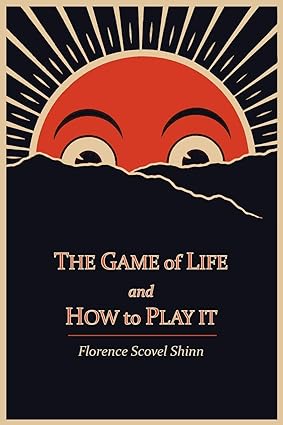
So, yeah, well, as you said, fear kills curiosity. With all the uncertainty in the world right now and over the last few years, it’s pretty easy to fall into that trap of being in fear. I learned a definition of fear I just love from the book The Game of Life and How to Play It by Florence Scovel Shinn. Fear is inverted faith. So you actually have faith in the opposite happening, the worst-case scenario happening, rather than the best-case scenario. You’re expecting the other shoe to drop.
My wife, Orion, whom you know you met at Maverick, has a great thing. I don’t know where she learned this one or came up with it on her own or channeled it, but worrying is praying for what you don’t want, which is a cool related concept.
That’s pretty good. I like that.
Suppose you’re in fear or worry. Yeah. You’re killing off your curiosity, and this idea of hunkering down is actually killing your business.
Yeah. It becomes a self-fulfilling prophecy, too. I think I get stuck in that trap where you focus on the 10% or 20%, not the 80%, that’s abundant, and you get in a scarcity mindset, and it becomes a downward spiral. It’s hard to pull out of that dive sometimes. So, yeah, interesting.
How do you pull out of it if caught in a loop?
I have a couple of practices that I think I’m a very classic ADD entrepreneur. So, as soon as I find something that works, I immediately abandon it for something that looks even better and shinier. It’s really useful when I can continue to go back to this practice. I won’t tell you it happens every single day, but it happens more days than not.
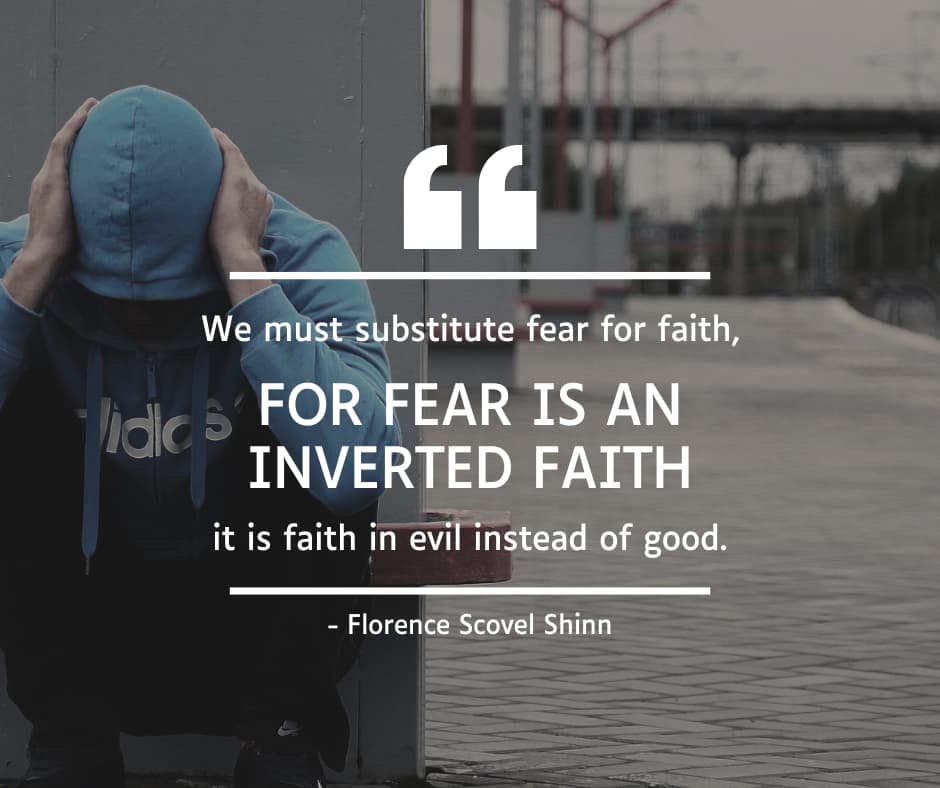
I’m actually an iPad user. I’m on an iPad right now, and I have Goodnotes, just a note-taking app. I was a huge fan of the full focus planner, an analog paper-based journal, and it’s a 90-day kind of calendar journal to-do list, the usual, whatever you call those things plan. When I could take that, the challenge with the full-focus planner was that it was analog.
There was no digital version of it. So if I happened to have it in my backpack, and then I found the right pen, and then the stars aligned, and then Venus was in retrograde, or what, then maybe I would remember to use that journal on the right day. So, I could take the things I liked the most about the analog version and sort of cobbled together my own digital version of a planner. So, I have a planner that I’ve made. It took me hundreds of hours to build, but I think I have what I want now.
Worrying is praying for what you don’t want.
One of the disciplines is every day, which is the first thing I do, and again, I’ll get it. 19 out of 20 days. I’ll write three gratitudes in the morning. Simple. I’m grateful for this morning. I recently just got a convertible, and the weather’s starting to get nice. One of the things I wrote was that I’m grateful for being able to put the top down on the way to work. These aren’t rocket science things. Sometimes, I’m grateful for what an amazing family I have. So it runs the gamut, right?
So every morning, that little five-minute discipline, for me, sets the stage not only to be grateful but also to be curious about what I will find. The second phase is the last thing I do before I go to bed, right next to the three-morning ones digitally. Again, I write about the three evenings I’m grateful for. I’m grateful for what trains me all day long to be looking for. “All right, what are the three? I’m going to write tonight.” So that’s a tiny little practice. But that three minutes in the morning, three minutes at night, and six minutes total go a long way to protect some of those thought processes. Now, when I get it wrong, I don’t do it or whatever. It’s not a perfect practice, but it’s better than where I used to be, which was bouncing around like a pinball aimlessly all day long.
I can relate. I’ve become very deliberate and disciplined in my gratitude journaling. What made the difference for me was that I decided I was writing these journal entries to God; this is no longer a gratitude journal. This is a God journal. I’m writing not just the obvious blessings, the revealed blessings, but the unrevealed blessings or yet-to-be-revealed blessings. In other words, the challenges and things I don’t want are blessings. I just haven’t zoomed out enough to see it.
So that really helps me to reframe things, write them down, and show gratitude. I also write down messages I receive and how I’m grateful for them. I address all this to God.
Every morning, that little five-minute discipline sets the stage not only to be grateful but also to be curious about what I will find.
That’s an intuitive and smart way to do it, I think. It’s funny. I’ve started probably in the last twelve or 18 months. The biggest challenges that I face are gratitudes. I’m grateful that this isn’t working how I thought it would work because I’m learning about x, y, and z. I think there’s a lot of power in that, too. For me, we’re in a constant battle to kind of reframe our reality.
When we’re good at it, things go well. When we’re not good at it, then that’s when we struggle. So, left to its own devices, I think the human brain would lead us to some crazy places. Some of us, anyway. Not all of us, but some of us.
Yeah. It is hardwired to be in fear, and you have to overcome it.
Yeah, for sure.
So what would be some of the other morning and evening routines that really make a difference for you in your life and business and how you show up in the world?
And have you been for a really long time? You mentioned Tony Robbins earlier. I was in my early twenties and was a voracious personal development reader. Brian Tracy, Norman Vincent Peale, Carnegie, and you name it. But I read Awaken the Giant Within by Tony Robbins. Between him and probably Brian Tracy and some others, I got really serious about goal setting.
I believe that that’s why I went to a digital journal on the iPad with the pencil instead of just typing it in. I believe we’re hardwired when we physically write with pen and paper or digital ink to program our subconscious. So, at the beginning of every year, I’ll take a week and do a personally painted picture. A lot has been written about that personal painted picture.
Brian Scudamore from 1-800-GOT-JUNK was the guy who taught me to paint pictures. Brian’s been a good friend for a long time. Cameron Harold worked for Brian, and he’s got his version of it called Vivid Vision. There are a million scenarios. But for me, what I do is I imagine it’s New Year’s Eve of that year. So this January of 2024, I sit down, and I think about December 31 of 2024, and in really vivid description, in first person, present tense, as if it’s December 31st of 24.
I write in long-form prose, kind of a description of what’s happening at that moment. It encapsulates for me all personal and business, kind of all in one. I used to do different ones, personal and business, but. But you’re putting yourself in that future state and imagining it’s already happened. Now, the litmus test for me, and again, everyone does this differently. Some people do three years ahead. I do what works for me. For me, I can’t think three years ahead.
I’m not that smart. So I do one year ahead. But the litmus test is, if more than 50% of what you wrote came true, you weren’t really doing this at the expansive level that maybe you should have been.
You’re not trying to write what you think will happen. You’re trying to write if you had an absolutely perfect year, which we all know is impossible, and everything went better than you could have ever expected, what would it look like? So 50% is the kind of Mendoza line, and if more than 50% happened, you probably didn’t think big enough. If less than 50% happened, your thinking was probably expansive enough. I often find that in years two and three, the other 50% tends to magically happen when you didn’t think there was any chance it could.
I believe we’re hardwired when we physically write with pen and paper or digital ink to program our subconscious.
I’ve been doing this practice for, I don’t know, 15 or 20 years, maybe longer. And it’s really served me well. I’ve taught lots and lots of entrepreneurs. It’s really hard to do. Sounds easy, right? You sit down and write about the end of the year, but if you do it the right way, it’s really a difficult exercise. Like, we do a big New Year’s Eve thing with my family, and then on January 1 or second, I shoo them away. So, I have a week by myself because this is super introspective. If you do it the way I do it, it’s a super introspective exercise.
So, I will wake up kind of on the morning of the first solo day. Let’s call it January 2. If you want all the nitty gritty, I will try to get up or get up a little bit. I’ll do it at our Florida house. It’s in the Florida Keys, so I’ll wake up early. Normally, on that first day, we have a boat. I’ll take our boat out into the ocean before sunrise. I’ll watch the sunrise on the boat in the ocean and just kind of do a sort of mind-clearing meditation.
And to your point, you get messages. You write them down. Whatever comes through in a journal with a pen and paper, I’ll just kind of freeform the ideas then. Again, this is a five-day exercise. We’re only, you know, an hour into day one, but it’s an important part of the whole thing. So I’ll spend that first morning just kind of, like, quiet, letting stuff sort of come through, writing. My goal is to do it by the end of the first day, and I. I’ve been taking notes leading up to this.
It isn’t like I just started this on January 2. By the end of that first day, I kind of have all the bullet points, and I start to think through, all right, what does perfect look like? And where do I want to be? Who do I want to be spending time with? Who do I want to be helping? Where do I want to be economically? Like, it really covers a massively wide range. I don’t write anything the first day other than bullet points and notes and kind of capture the morning of day two; typically, depending on the weather, I’ll go back out on the boat. I’ll repeat the sunrise exercise. I’ll kind of let the last little bit of stuff come through.
Curiosity is now more crucial than ever in the ever-changing world of entrepreneurship. It drives us to explore, learn, and innovate amidst growing complexity. Share on XThen, around lunchtime on that second day, I’ll start to write. I actually use a tool, which is amazing, but I’m shocked it hasn’t become more popular. But the company’s called Freewrite, and it actually looks like. I’d love to know if any of your listeners are Freewrite fans, but it looks like an old Smith Corona typewriter, the ones we all learned about in middle school.
It’s a word processor, but it’s not connected. The only connection to the Internet is to back up what you write, so you can’t surf the web. You can’t do, you can’t do anything except write. And they make it really hard to edit. So you can’t even like backspace, and you can, but it’s really hard to edit. You got to really try hard. So the thesis is you just write on the free write, and then it uploads to Dropbox or wherever, and then you can add it in Microsoft Word or somewhere else.
So I will start free-form writing on the free write, and there are typos and mistakes and all sorts of stuff, but I’ll just sort of get it out. Then I start to refine, and hopefully, by day five, mine will end up being about ten to 15 pages long; you know, I’ll edit them down, but they’re first person, present tense, future date, and descriptive, like overly descriptive, free form, long-form prose. And there are a million other ways to do it. That’s how I do it.
So, what is the end product? Is it typed up? A five-page vision document? Or is it just stream-of-consciousness writing?
Yeah, it almost reads like a short story. It ends up reading like it’s nonfiction, hopefully a short story. Mine will typically start as I sit by the fire on New Year’s Eve, 2024. I can’t believe what an incredible year it’s been. It started with, and then I’ll just, I’ll kind of go from there. Now, mine, I tend to break them down by functional area. So I’ll have when I was running the call center company, which was about 650 people and 24 locations, and I would break down finance, marketing, sales, operations, telecom, the tech stack, our website, our marketing plans, and all that. Now, I’m a little more integrated into what I do, but I’ll break down the coaching organization and align five of the clients we helped. Again, marketing and sales will be section by section but written in a short story format.
Gotcha. And do you review this on a daily or monthly basis?
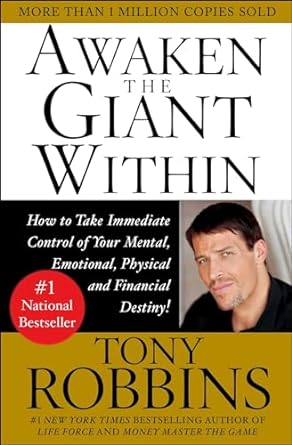
I produce it in January, but I often never see it again. It’s more the process of getting it out in the world now. Every once in a while, I’ll come across it. The funny story is that my COO at the call center company now runs the scaling-up coaches organization. And the story he tells was, I don’t know, 2008 or 2009. And it’s July. I used to share my paintings and the company, and I would share one with the executive team.
It was July eight or nine. We were in our weekly meeting where we did planning. I said, “Hey, I’m frustrated we’re not doing x, y, and z, and whatever.” he pulled out of his backpack these ratty-looking 15 pages, stapled together notes in the margin, and a dog-eared piece of, like, collection of paper. He’s like, “Well, that’s not what it says in the painted picture.” I looked at it, I’m like, “Painted picture? Where the hell did you get that? That was January. It’s July. I don’t even remember writing it.” There were 13 people in this executive meeting, and I asked if anyone else had theirs. And, like, eight copies come out of backpacks. And so my team would take it.
I would finish it and be done and never want to think about it again, but my team would take it and then use it kind of as a guideline for the year. So, there is some power to it from that perspective. For me, I was happy never to see it again because it is really hard to do. It sounds. Again, it sounds easy, but if you’re going to do it right and go deep, it’s hard to do. And once you’re done, you’re kind of done. Okay, did that.
It sounds like five fun days of watching the sunrise on the boat and scribbling some notes. It’s a difficult exercise to do. So, what is that worth?
Pattern recognition, again, comes down to how you act at the subconscious or unconscious level.
When you’re doing it, do you feel like you’re channeling something greater than you, or are you just digging into the depths of your soul and trying to wrestle with your shadow self and stuff?
No, I think, again, if you’re doing it the way I do it, where you really go deep, you’re absolutely channeling wisdom from other places. That’s why I love free writing so much. Because when you unencumber yourself from editing, whatever comes out, comes out. I’m often surprised by the words that. I will actually when I write, they have an online version called Sprinter. But when I write on a free writer, in that drafting versus editing mode, I actually won’t even look at the words that come out on the screen or wherever I’m writing. I’ve noticed that this is crazy, but if I look up to the right as I write, I’m really analytical, which I guess is left-brained because I’m looking up to the right, and if I want to be really creative, I’ll look up to the left.
And what? The words that come out are substantially more creative. Now I’m as kooky as they come. That could just be psychosomatic. And maybe I made this all up in my head.
No. This is legit stuff. Actually, a diehard atheist would sign onto this because what you can use this for is lie detection. So let’s say that you’re talking to somebody and unsure if they’re telling the truth or anything. You could get them to talk about various aspects of the situation that you’re trying to probe into. And you’ll see them. It may not be up and to the right but up and to the left. It might be straight to the left, or it might be whatever.
But you notice that they’ll favor a certain direction with their eyes. But then, when they’re making something up, in other words, lying, their eyes will go in a different direction because they’re accessing the creative centers. So, this is a powerful way to detect lies in someone you’re talking to.

Yeah. And for me, it’s up. When I’m being creative and lying, it’s up until the left for sure. I like to think I don’t tell that many lies, but we all tell the occasional white lie here and there. We had a client that we took to that I took to market in the M&A world, and they were unbelievable operators. They were in the HVAC space. Unbelievable. Like, left nothing to chance.
One of the things they trained their technicians to do is when they would park the truck with all the branding and everything at the homeowner’s house. Their goal was to try and get the truck parked in a way that when the tech knocked on the door, by the way, they knocked, they didn’t ring the doorbell because friends knocked and strangers rang the doorbell. Then they would take two steps back because one step back was still too close, and three was awkward. They would knock with a special knock and then take two steps back.
But the goal was when the homeowner came to the door, that the brand, the company’s logo, was over the tech’s left shoulder, if possible. When they look up and to the right, most people tell the truth. And when they look up to the left, they are not this, according to their research.
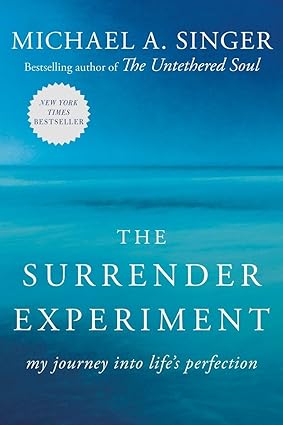
I’m just the messenger on this one, but they wanted the homeowner to actually be looking up and to the right if possible. That’s where the truck got parked. That was how specific they were.
Now, that fits on a marketing podcast, for sure. And again, this came from industrial psychology and all sorts of other places, but that was the mindset. If we can get the homeowner looking up and to the right, there’s a higher probability that we’ll build trust quickly because, for most people, that’s their trust side, and that’s their fabrication side. So I don’t know if any of that’s true or not.
It’s cool to test. If you’re willing, I have an experiment for you to try.
Yeah.
So maybe if you’re open to going back to that document you put together in early January and pull some stuff from it that just jumps out at you and maybe make it a one pager, whatever jumps out at you, and then add that into your morning routine to review it on a daily basis for, let’s say, two weeks and see if you notice anything positive about that. If you want to keep doing it, then do it. If not, chalk it up as another stupid idea of Stephan’s and move on with your life.
No, I love it, and it’s so funny. It ties into this. It is hilariously funny that you even brought this up. I’ve been stuck on this idea in my digital journal for the last three weeks. There was a movie years ago called 50 First Dates, and it was Drew Barrymore and Adam Sandler. The premise of the movie, was Drew Barrymore was in a car accident and had a head injury and amnesia. So every morning when she woke up, she thought it was the morning of the day she had the accident and didn’t remember anything since the 51st date.
So I’ve been looking for a morning practice, and ultimately, what happens is you get to watch the movie. Still, somebody makes a videotape for her to watch every morning so that she can then remember and know all the details of the accident, knowing that she has amnesia.
So I’ve been looking for the 51st-date morning routine so that every morning, I can pretend like I have amnesia. There’s something that I do, whether it’s a video or one-pager or whatever it is, that is kind of my reminder for the day that supposes I’ve basically had amnesia and forgotten everything. And this would be the perfect way to start every day.
That’s cool. I like that.
Selling a company is like a hyper-supercharged set of pattern recognition activities, where every move requires keen insight and swift adaptation. Share on XMaybe what you just mentioned is going to be the centerpiece of that.
Yeah. Well, to get really metaphysical for a moment, we entered the veil of forgetting or experienced the veil of forgetting when we were born. So we had made a set of soul contracts with various people, business partners and clients and friends, best friends, soulmates, parents, kids, our children, and so forth, siblings. And then we enter this world, and we forget all of it, forget our purpose, mission, and the crazy stuff that we signed up to do and experience. And then we go through life bumbling through it, thinking that this is all.
You get to relearn it all. Yeah, I totally buy that. That whole mindset and I know in my family and in my circle of friends, I know old souls and new souls, and I know the first trip, I think souls. And so I totally buy into that.

Awesome. So, another thing that I do that might be related or not part of my morning routine seems relevant. I’ll review a one-pager I produced with the help of Craig Filek, a previous guest on my other show, for a few minutes. I think now that I’m thinking about it, I should republish that on this show, too.
His process is called Purpose Mapping. Going through the process, you end up with this one-pager with not just your purpose and your vision statement, just a sentence or so, but also your shadow, three or four, whatever attributes of your shadow and the gold that you extract out of integrating your shadow, maybe that’s four or five different words or adjectives and your strengths and a few other things that just. It really helps me to crystallize what is important and what my superpowers are. So I look at that every day.
I think the repetition that Tony Robbins says this, that practice makes permanent, practice makes perfect. So if I keep putting this in front of me and reviewing it daily, especially the things I want to incorporate, my vision for the world is a world where everyone, absolutely everyone in humanity, cleaves to the creator, cleaves to God. So I look at that vision on this one-pager, pray for it, and envision it.
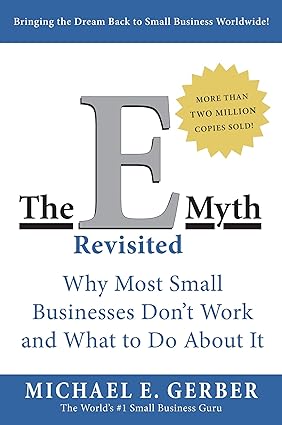
Yeah, that’s very cool. I like that idea. What was Craig’s last name?
Filek. Yeah. Purposemapping.com.
That’s awesome. Every day is kind of a new opportunity to fight the good fight, I guess, or use a healthier metaphor than fight the good fight. But it’s refreshing to build some routines that just remind you of, even though it’s raining for whatever reason, that you know there’s good on the other side of it, for sure.
I know we’re getting close to closing out this episode, so I wanted to ask you about other favorite books, tools, podcasts and other resources that you want to share with our listeners.
Yeah. So, in no particular order, I think about the books that I look back on and what impacted me the most. And when I was a new entrepreneur, I read The E-Myth Revisited by Michael Gerber, which, when you read it today, you’re like, this book’s so simple. Like, these ideas are not revolutionary. But I think the idea, the one distilled idea out of that book, is thinking about your business, your professional life, whatever your entrepreneurial endeavors are, as something completely separate from yourself and not wrapping your identity up in your business, which I think ties into a lot of what we talked about today as well.
When someone says in a lot of countries, we don’t ask, “What do you do?” We ask, “What do you love, and who are you at your core?” But in the Western world, specifically North America, we often start with what you do for a living. What do you do? And we get wrapped up in this idea that we are what we’ve created. I think the E-Myth is a lot about thinking about things separately from yourself, so that is for sure.
Then, I’m a personal development fan. I think once you get past the hokie aspect of some of it, there’s so much value in it, and I’m always amazed. I was probably at Genius Network when Brooke Castillo was on stage with Joe Polish, and Brooke commented.
Do as much work as you possibly can on yourself.
I think this applies way more than just on the marketing front. But Brooke’s built a huge personal development brand and has succeeded incredibly. And she said “I can’t tell you how many times people tell me, oh, yeah, that’s hokey, that won’t work.” or, “Oh, yeah, that idea is not a good idea. And you can try that, but that’s not going to work.” They’re literally running a company one 20th of the size of hers, but they’re telling her what couldn’t possibly work when it’s already worked for her.
I think it’s kind of the same thing in personal development. You run across many people along the way who say that stuff’s hokey or doesn’t work. Most of the people who are saying those things are the people who could benefit the most by suspending their disbelief for a minute and actually focusing on some personal development. So I’m a big believer in that. So, I guess my message isn’t necessarily a book or a podcast. It’s about doing the work and not listening to the naysayers because the naysayers are naysayers because they’re not doing the work.
Or they were just put there by God to give you a hard time so that you’ll earn the transformation.
Yeah, for sure. But I’m a big, you know, I’m a big, and I always have been a big. Do as much work as you possibly can on yourself. If Bill Gates can carve out two weeks a year to do a think week where he does nothing but read and kind of train, we can all say what we want to say about Bill. This is certainly not an endorsement of Bill Gates, but a guy that we could all probably agree with is fairly busy, takes two full weeks a year, and just reads and ponders and thinks and calls think weeks. If he can do it, we can probably all carve out that time. I think that’s incredibly well-spent time. And again, the naysayers will tell you it’s a waste of time.
So that’s my final thought, I guess.
All right, awesome. So if our listener wants to learn more from you and maybe work with you, if they’re an entrepreneur who is looking to exit, hire your team and you as the agent to help them maximize their exit.
Yeah, the best place to find us is align5. So it’s just the word align and the number 5.com; they can book a call. Kristin Kopp is my chief of staff, and she kind of handles that end of the world. So, yeah, they could definitely book a call with Kristin. She can kind of walk through what we do and who we serve. Our end goal every day is that the world is stacked against most middle-market growth company entrepreneurs. They’re not big enough to be the Fortune 500 and all the influence that comes with that. They’re not sexy enough to be a Main Street USA startup.
They’re just sort of grinding it out in the middle, and they get disadvantaged. I’ll just say that. And we wake up every day trying to be a hero to that middle market entrepreneur. So if you’re in any part of that ecosystem and need help, I think we’re pretty good at that. That’s our mission in the world.
Well, thank you, John, for sharing your wisdom and insights with us. Also, thank you, listener, for being open-minded and open-hearted enough to listen to this conversation and consider working on yourself as much as you work on your business. We’ll catch you on the next episode. I’m your host, Stephan Spencer, signing off.
Important Links
Connect with John Ratliff
Apps and Tools
Books
Businesses/Organizations
Film
People
Previous Get Yourself Optimized Episodes
YouTube Videos
Your Checklist of Actions to Take










About John Ratliff
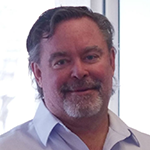
John Ratliff is the founder of align5 and also serves as the CEO of Scaling Up Coaches. Align5 advises growth company entrepreneurs on a variety of strategic issues, including sell-side and buy-side M&A. Scaling Up Coaches is a dynamic global community of coaches serving midmarket growth companies.
John is passionate about strategy, company culture and employee engagement. He has been a member of the YPO Philadelphia chapter since 2007 and the EO Philadelphia chapter since 2004.






Leave a Reply